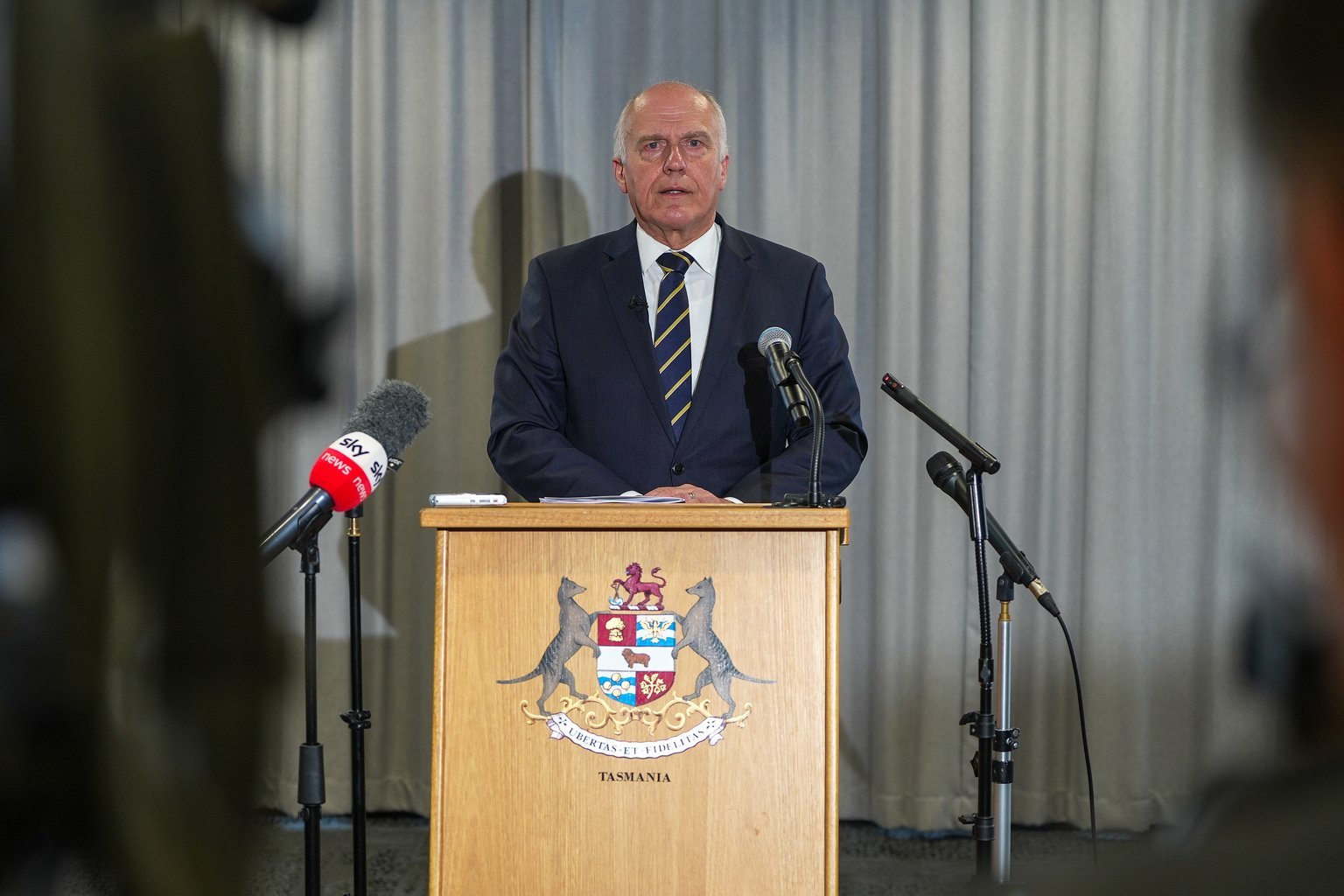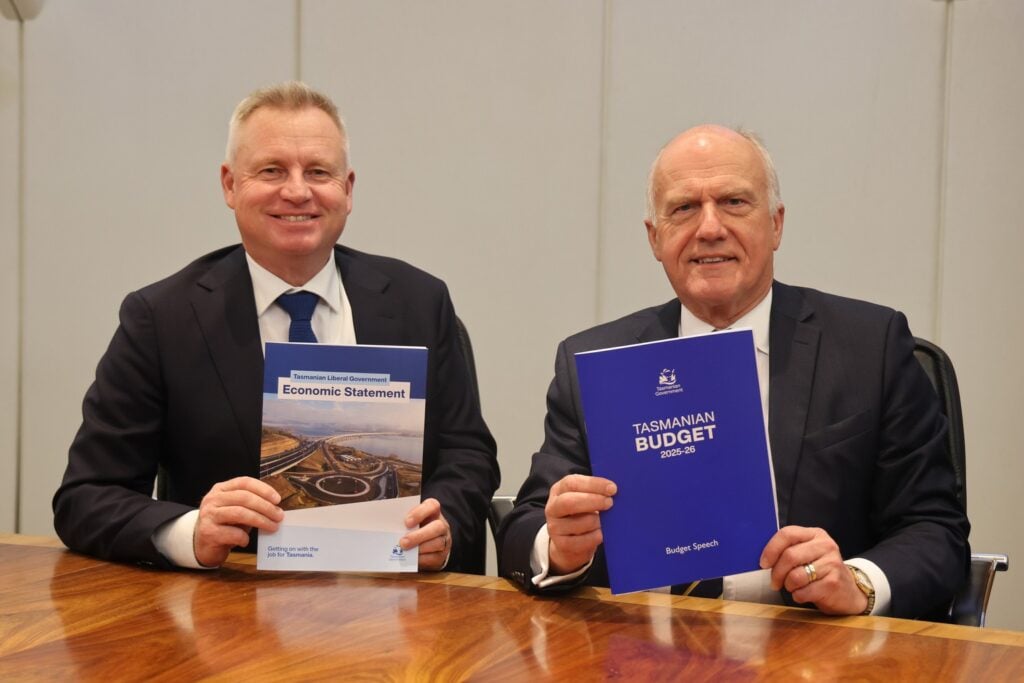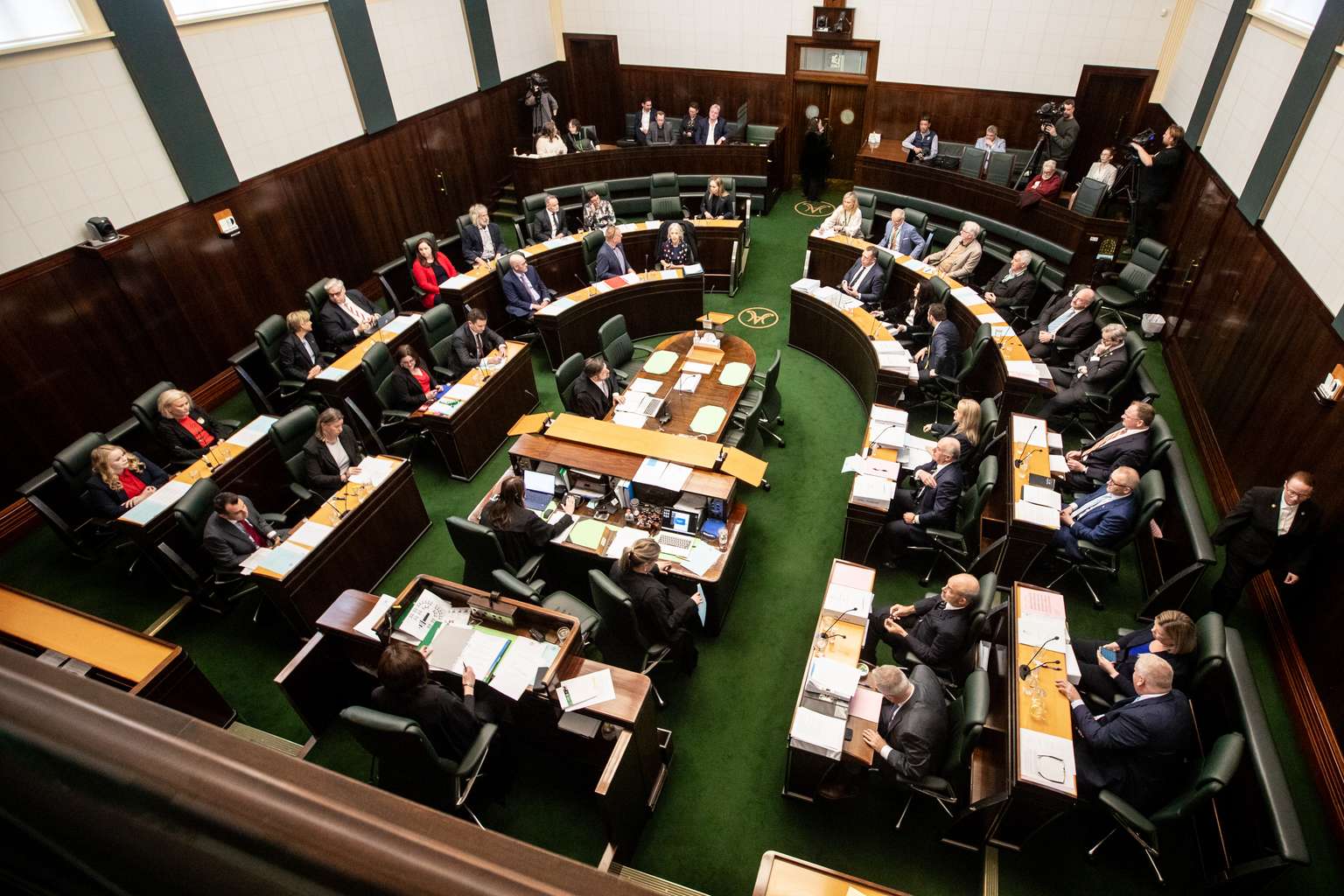Tasmania’s path back to surplus relies on unspecified efficiency savings and workforce cuts, with Treasurer Eric Abetz acknowledging the state’s first balanced budget in a decade won’t arrive until 2028-29.
The Liberal government’s “interim” budget, delivered on Wednesday, forecasts a $1 billion deficit this year as net debt climbs toward $10.3 billion by 2028-29 – equivalent to $23,000 for every Tasmanian.
Abetz told parliament the compressed election timetable meant a more comprehensive budget would follow in May 2026.
“Today’s budget is an interim budget,” he said. “The 2026-27 budget, to be brought down in May next year, will mark the next phase in Tasmania’s ongoing need for fiscal reform.”
The budget introduces just three new savings measures – cuts to departmental marketing, office leasing improvements and procurement enhancements – totalling $12 million annually at their peak.

The government is banking on much larger efficiency dividends of $150 million across 2026-27 and 2027-28.
An Efficiency and Productivity Unit (EPU) has been established to identify savings across government.
Public sector workforce reduction targets have increased from 2,500 to 2,800 positions, while agency communications spending will be cut and centralised.
With inflation running at 3.2%, the planned spending cuts of 1% in 2025-26 and 2.6% in 2027-28 represent real reductions of up to 6%.
Borrowing costs will reach $632 million by 2028-29, consuming 7.6% of government spending. Including superannuation liabilities, debt servicing will exceed $1 billion.

The state’s $7 billion superannuation liability – a legacy of previous governments – costs around $400 million annually to service.
Workers’ compensation costs have also blown out dramatically, requiring an additional $183 million this year on top of $105 million provided in 2021-22.
“It is noted that other state governments of a different political hue are now legislating to staunch this haemorrhaging of their state budgets,” Abetz said.
He said Tasmania faces a $673 million health funding shortfall over five years unless the federal government increases its contribution to 45%.
“For too long, the federal government has chronically underfunded Tasmania’s health system,” Abetz said. “This is equivalent to 1.2 million emergency department presentations.”
Despite the fiscal pressures, total government spending will reach $10.5 billion in 2025-26, up 2.6% from the previous year.

Health spending has increased 12% to $14.5 billion over four years, while education rose 5% to $9.9 billion.
Infrastructure investment totals $3.4 billion over four years, including $1.6 billion for roads and bridges, $696 million for hospitals and $300 million for schools.
The Macquarie Point stadium will receive $609 million in equity funding over four years, including contributions from the federal government and the AFL.
Abetz said the stadium would add $269 million to the economy during construction and support 1,500 jobs, with $30 million in annual economic benefits once operational.
The government’s target of a $5.6 million surplus by 2028-29 represents just 0.05% of the total budget, leaving virtually no buffer for unexpected costs.
Revenue is forecast to grow 5.9% to $9.4 billion, outpacing spending growth but starting from a deep deficit base.
Economic forecasts show gross state product growth rising from zero in 2024-25 to 1% in 2025-26, with state final demand recovering from negative 0.5% to 2.25% by 2026-27.
Unemployment is expected to remain around 4%, the lowest in Australia, with 51,000 jobs created over the past decade.
Treasury will release a Fiscal Sustainability Report in February 2026, brought forward from June, to inform the development of a new fiscal strategy for the May budget.
Abetz said the savings measures would be “proportionate to the size of the challenge and the strength of the Tasmanian economy”.
“Through discipline, yet sensitive, management and clear purpose, we will ensure a balanced budget, confidence for the community and strength to our state’s economy,” he said.








